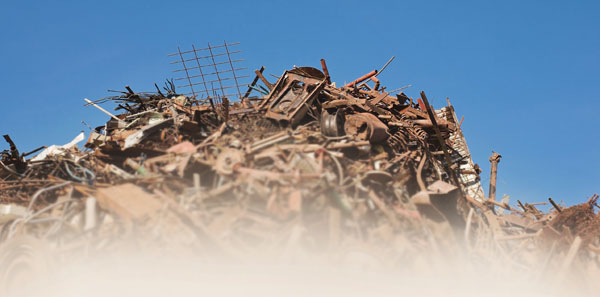The Bible: Treasure in the Trash
 The American children’s television series Sesame Street, well known for its “Muppets” characters, premiered on November 10, 1969, and it became one of the longest-running children’s programs on television.
The American children’s television series Sesame Street, well known for its “Muppets” characters, premiered on November 10, 1969, and it became one of the longest-running children’s programs on television.
Like many parents, we wove Sesame Street into the fabric of early learning for our kids. Forty-two years later, I’m still partial to a grouchy but lovable Muppet called Oscar, who lives in a garbage can. Oscar has a life-long attraction to and passion for trash. One song has the refrain, “Trash, I love it.”
It makes perfect sense that a loving God should reveal himself to us in the language of ordinary people.
This strange affinity for trash also appears in older, more sophisticated, more highly educated persons known as archaeologists. They investigate past cultures by studying the things those cultures left behind. Some of our most exciting knowledge and insights into ancient civilizations have come to us from household ruins, city dumps and even communal cesspits. In other words, trash.
Everyday documents sifted from the trash of ancient towns and cities are rich sources of cultural information. In contrast to Oscar, who loves trash for its own sake, the archaeologist loves what he or she can learn from it. In fact, some archaeologists can, if the quality of the trash is high enough, become even more expressive than Muppets!
One exciting find in the village dump in Oxyrhynchus, Egypt, actually changed our perception of the New Testament.
At the time of Jesus and the apostles, the prevailing language of the Eastern Roman Empire was Greek. But there were two levels of Greek language: the classical Greek of literature and the koine Greek of common conversation and writing. Things written in classical Greek tended to be copied and preserved in libraries and royal collections. But things written in the common, or koine, style—anything from personal letters and journals to shopping lists, would in time find their way into the trash can and finally to the garbage dump. And of course, since many of the common words and expressions in koine were not used in classical Greek, these words and expressions were not preserved for posterity.
And as it turns out, the New Testament was written in the koine, the common form of Greek. It has a vocabulary of only about 5,000 words, and of those, about 500 were considered unique to the New Testament, not found in other Greek literature up to that point. Scholars agonized over the disparity between New Testament and classical Greek.
Schools of thought emerged to deal with this. “Hebraists” thought that New Testament Greek must have been a translation from an original Hebrew text. “Purists” surmised that New Testament Greek was a special language, created by the Holy Spirit and “purified of its pagan origins” to suit the purposes of God’s revelation.
Eventually, some scholars started thinking outside the box. Bishop Lightfoot, one of England’s most insightful New Testament scholars, said, “if we could only recover letters that ordinary people wrote to each other without any thought of being literary, we should have the greatest possible help for understanding of the language of the New Testament generally.”
In April 1897, the bishop got his wish when Bernard Grenfell and Arthur Hunt began discovering sample after sample of written koine Greek in that garbage dump at Oxyrhynchus, Egypt—including nearly all of the words formerly thought unique to the New Testament.
According to biblical scholar Eugene Peterson, “The words came from wills, official reports, letters from husbands away on business to their wives at home, a letter that a son who had become a soldier wrote to his parents, a letter in which a father admonished his children who were away from home, petitions, accounts, shopping lists, bills and receipts—the kinds of writings that never get bound into books and catalogued in a library. This was the kind of writing that, when it has done its work, is thrown away.”1
The impact of all this on Bible translation and Bible reading is huge. It makes perfect sense that a loving, considerate God should reveal himself to us in a manner we can understand, in the language of ordinary people. He’s given his precious word to all of us, not just to the highly educated.
Sesame Street’s Oscar the Grouch says “Trash is everything to me.” While it’s unlikely we could agree entirely with that sentiment, it’s worth remarking that some very important knowledge about the word of God came from sifting through an ancient town’s trash.
Thanks to archaeology and scholarship, Oxyrhynchus has proved to be a case of Treasure in the Trash.
1. Eugene Peterson, Eat This Book (2006), p. 145.
Author: Kerry Gubb
